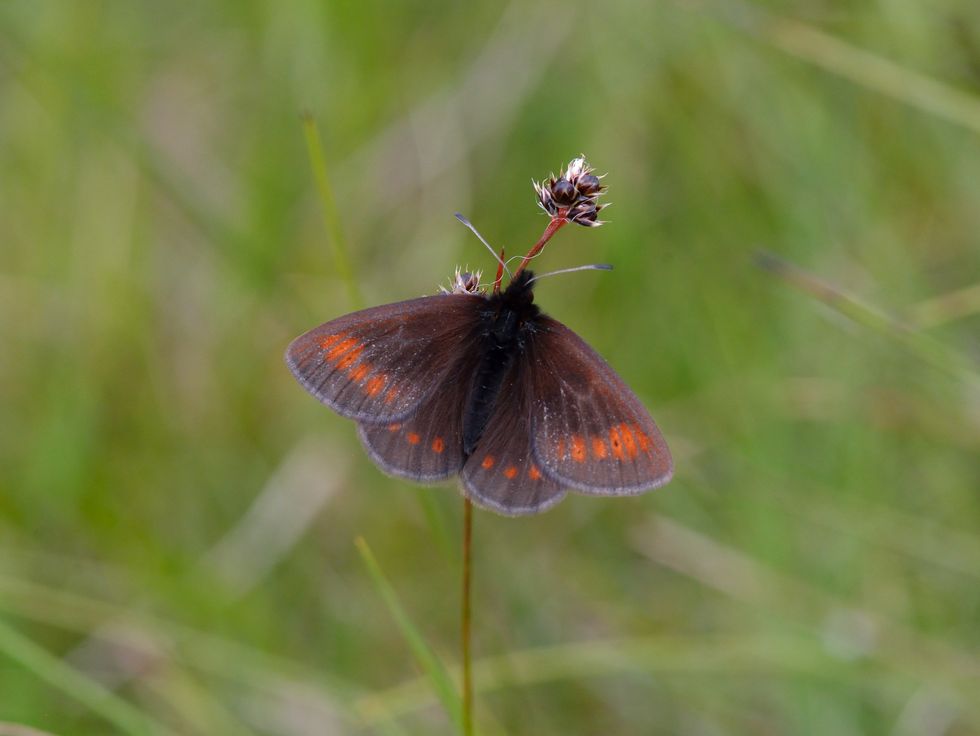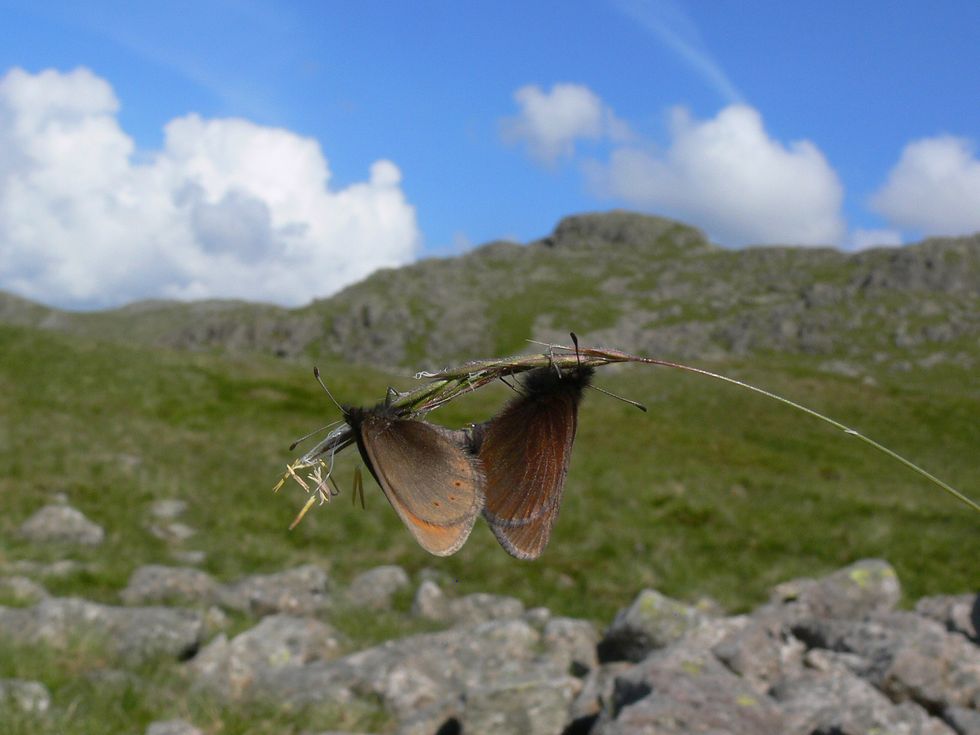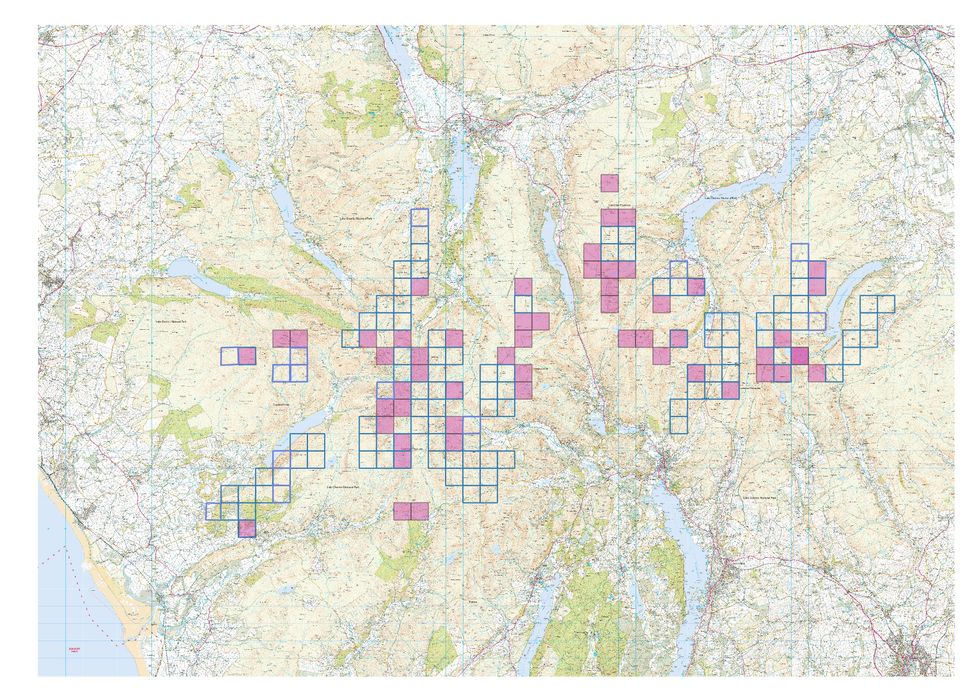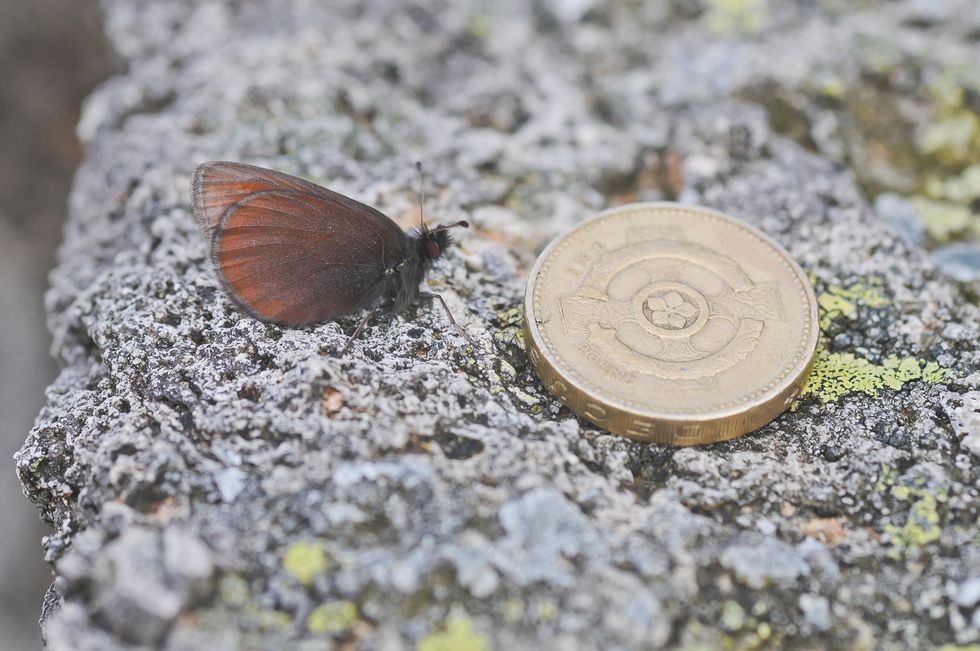
Visitors to the Lake District are being asked to look out for England’s only mountain butterfly to help scientists protect the rare species.
The mountain ringlet, a small brown butterfly with orange wing spots, lives exclusively on mountains and is more commonly found in Scotland than in England, where conservationists say it is so hard to find that they have yet to discover whether numbers are going up or down.
Adult butterflies usually emerge in June and fly for up to three weeks, but the timing depends on the weather – with the last week of May the earliest it has been spotted in Cumbria while the latest is mid-July.

The butterflies are small – 35-38mm (1.4inches) – and only active in bright sunshine, keeping low to the ground in short flights, pausing on grass tussocks or feeding on the flowers of tormentil and heath bedstraw.
Wildlife charity Butterfly Conservation is examining how mountain ringlets are responding to climate change, with concerns mountain species will be squeezed into smaller areas of suitable habitat as temperatures rise.
The charity says sightings from the public, as they explore the Lake District national park, would help improve knowledge of the butterfly’s distribution and breeding success.
Butterfly Conservation North of England conservation manager Martin Wain said: “We would be so grateful if fell walkers could keep their eyes peeled for this lovely little butterfly and report their sightings.
“You might even discover a new colony! We urgently need to know more about where it is so we can learn more about how to protect it.

He added: “Looking for the mountain ringlet can add extra interest to your hike, whether you slow down and mindfully look for it, watch out for it as you eat your sandwiches, or just keep it in mind as you walk.”
The charity has produced a map of previous sightings of mountain ringlets, all above 450 metres (1,476ft), on mountains in the Borrowdale volcanic group – from Wasdale in the west to Mardale and Haweswater in the east.
The map also includes potential new locations marked in pink squares, near to existing sightings, where conservationists are most keen to encourage people to look for new colonies.

Lancaster University student Mim Woodward, who is helping to co-ordinate the project, said: “If you can explore one of these pink squares, you could be the first to record a mountain ringlet there – helping to uncover a brand new colony.
“These are the most important areas for us to search, and your walk could make a real difference to Butterfly Conservation.”
The charity hopes to work with farmers and land managers across Cumbria to trial different land management techniques, in particular grazing regimes, to see how to maintain the best habitat for the mountain ringlet.













